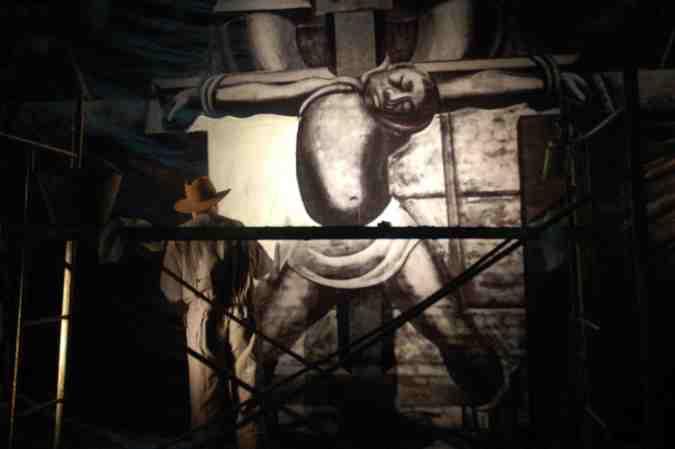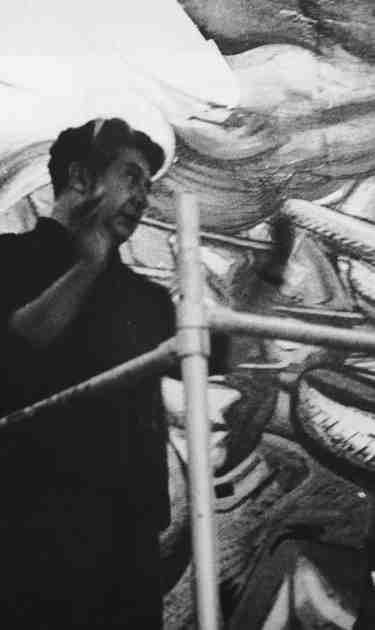In April 1932, David Alfaro Siqueiros arrived in Los Angeles. The muralist and activist had been serving a jail sentence in his native Mexico for his openly communist leanings, which the country’s government quickly cracked down on. His political leanings, as well as his commitment to creating art that could serve the public, led him to work on two different murals in Los Angeles that are infamous precisely because of they outcry they elicited. One, in particular, found a second life when it was recovered decades later and found itself becoming a beacon for the Chicano movement.
In Siqueiros: Walls of Passion — a documentary directed by Lorena Manríquez and Miguel Picker — audiences get a look at the life at one of the most famous Mexican artists of the 20th century. One who may not be as immediately recognizable as his contemporary, Diego Rivera, but whose influence — both political and artistic — deserves to be reassessed. With long, lingering close-ups of his murals all over Mexico, as well as archival footage that places him at key moments in Mexico’s history, Manríquez and Picker put the artist in context for those who may only know his name in passing.
But perhaps the most fascinating tidbit in this informational bio-doc, which features Cheech Marin in voice-over as Siqueiros, is the story of “América Tropical,” a mural the artist worked on in Olvera Street in the El Pueblo de Los Angeles Historical District. Commissioned as a way to bolster the bustling Latino enclave in LA, the mural got one final detail added last minute. Ever driven by his own left-leaning politics, Siqueiros sneaked in at night and painted an indigenous Mexican crucified on a double cross capped by an American eagle as a way to visualize the full title he’d decided to give his mural: “América Tropical: Oprimida y Destrozada por los Imperialismos” (“Tropical America: Oppressed and Destroyed by Imperialisms”). It was as powerful an image as could be found on such a public space. Unsurprisingly, the wall was painted over and presumed lost.

Nevertheless, and though it took decades, Siqueiros’s move inspired many generations of street artists, especially those who wanted to put non-white faces on the city’s facades. Indeed, some of the most thrilling aspects of the film is to see his sprawling, colorful murals intercut with the vibrant ones that adorn contemporary Los Angeles walls. When, decades after he went back to Mexico and his U.S. murals were thought to have become forgotten relics, the weather conditions had chipped away at the white wall that had first covered “América Tropical,” his work resonated with new kinds of left-leaning artists and activists.
Chicanos saw in this ghostly mural a symbol of their own struggle and found someone whose artistic and political vision mirrored their own. “This is a metaphor of the Chicano movement,” says director Jesus Treviño in the film, “after decades of being an oppressed minority in the U.S., a voiceless minority, the baby boom generation was beginning to make itself heard. We were saying, ‘Ya basta!'” It’s but a brief moment in the film, but one that reminds us of the reach Siqueiros’s art continued to have even years after his death, a reminder of the timeliness his public art and his commitment to social issues had in the 1930s and the timelessness it embodies today.
Siqueiros: Walls of Passion screened as part of the 2019 Los Angeles Latino Film Festival.




